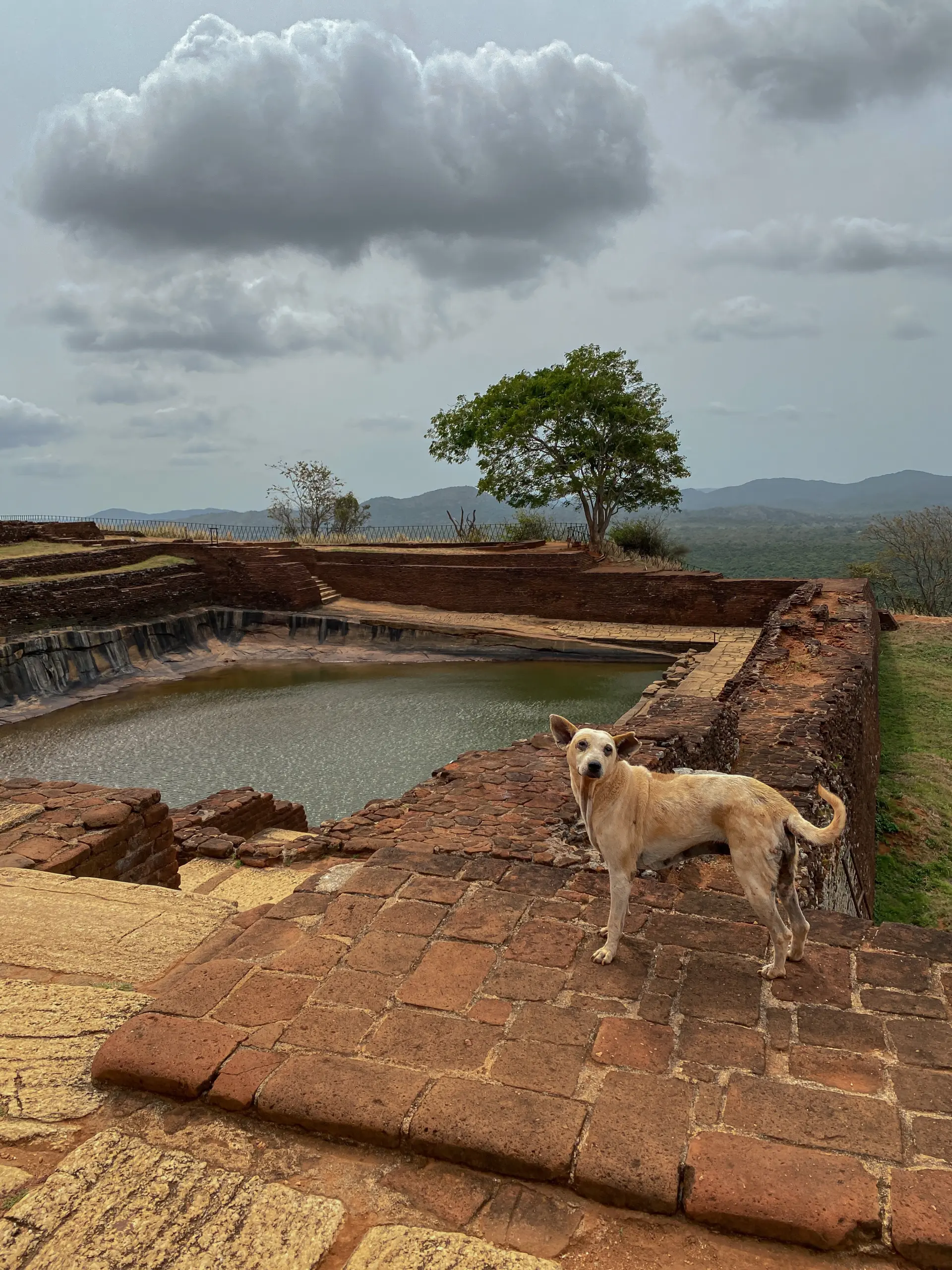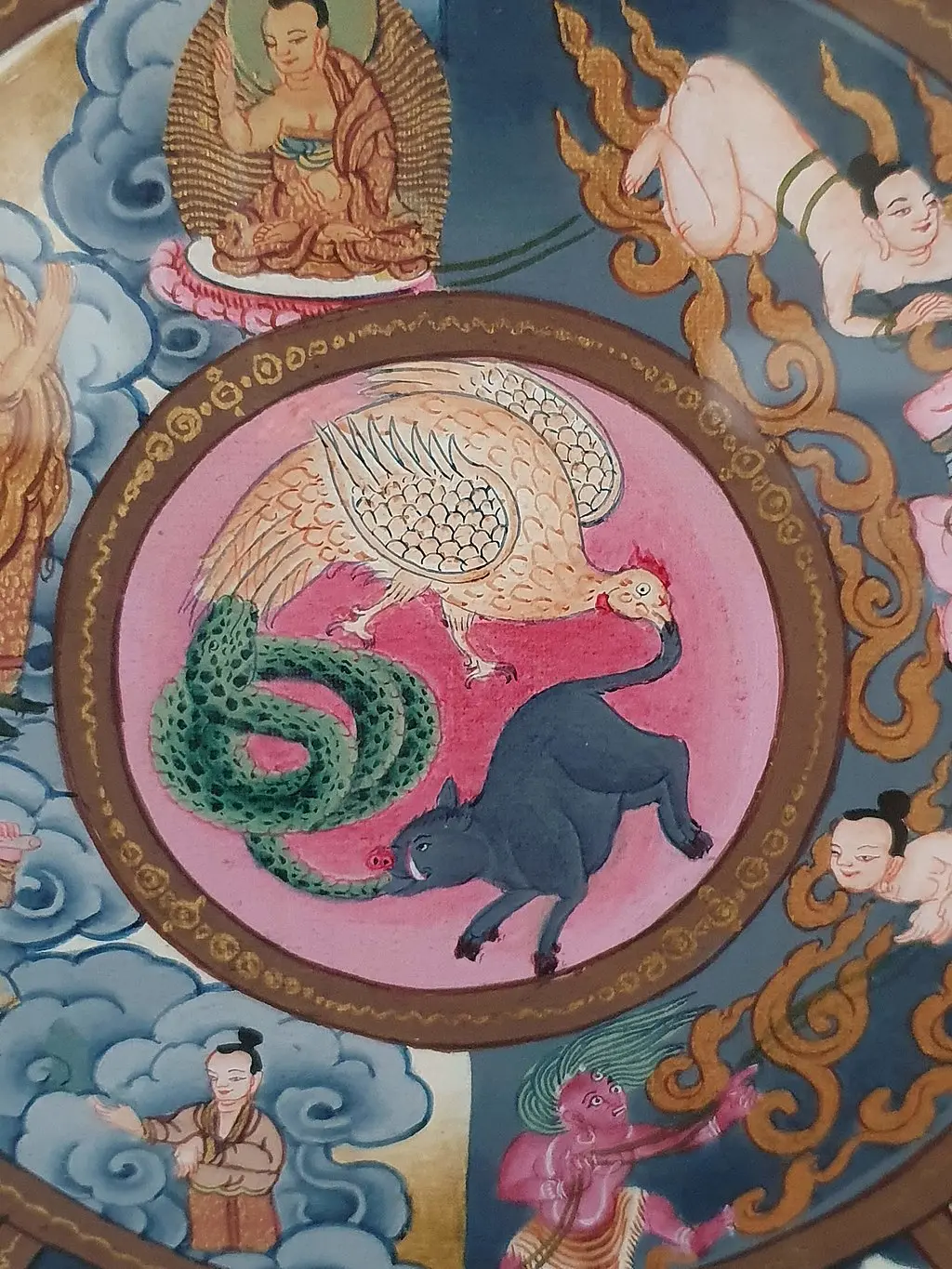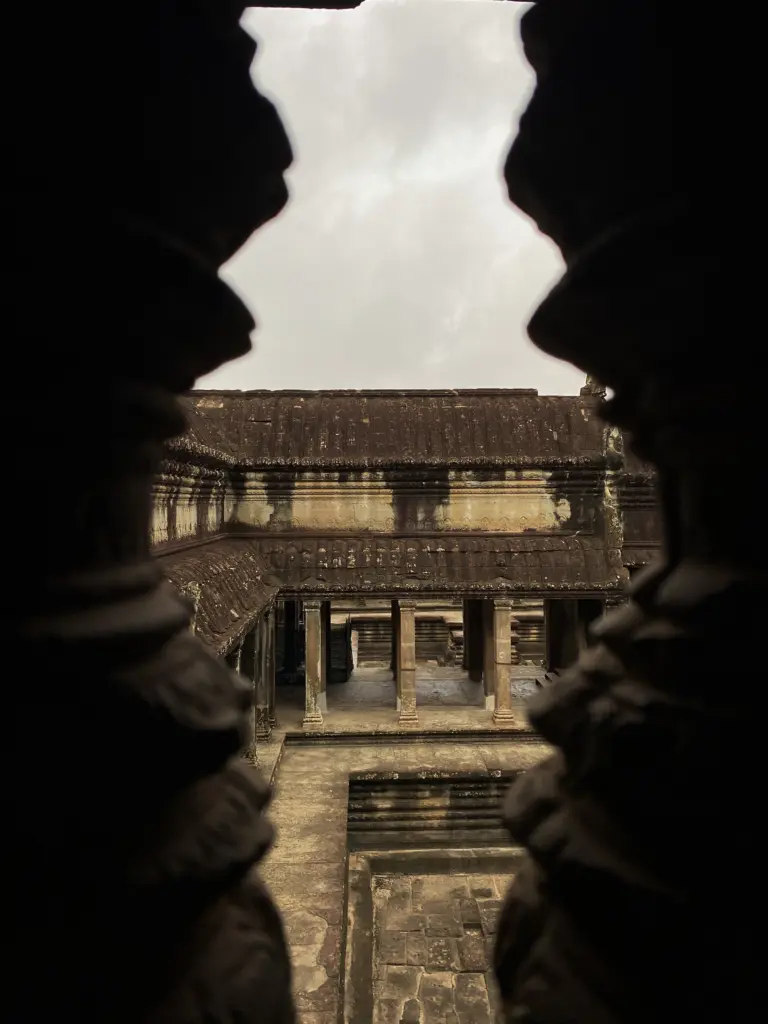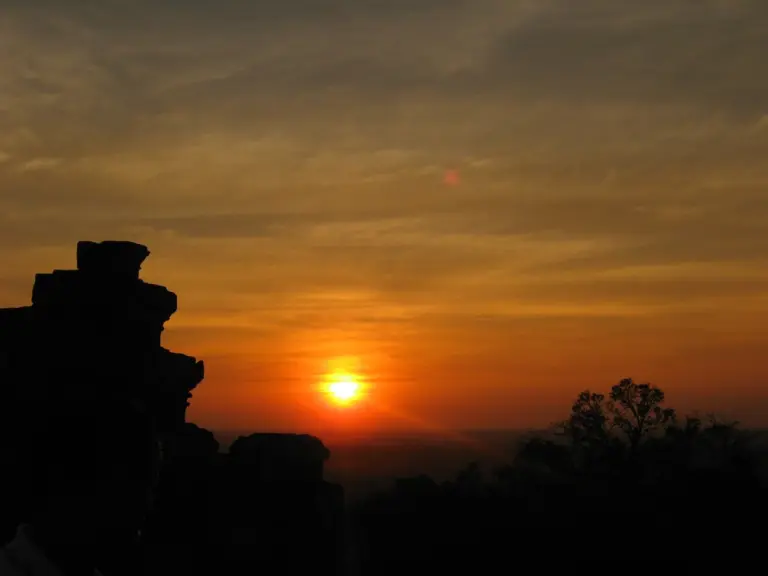Mandalas have long captivated the human imagination.
Spanning cultures, religions, and centuries, mandalas serve as spiritual symbols, artistic expressions, and potent tools for meditation.
But did you know there are various types of mandalas, each with its unique purpose?
In this article, we’ll go on a bit of a trippy journey through ten distinct types of mandalas, uncovering their benefits and exploring how they can enhance our understanding of the universe and ourselves.
Table of Contents
Toggle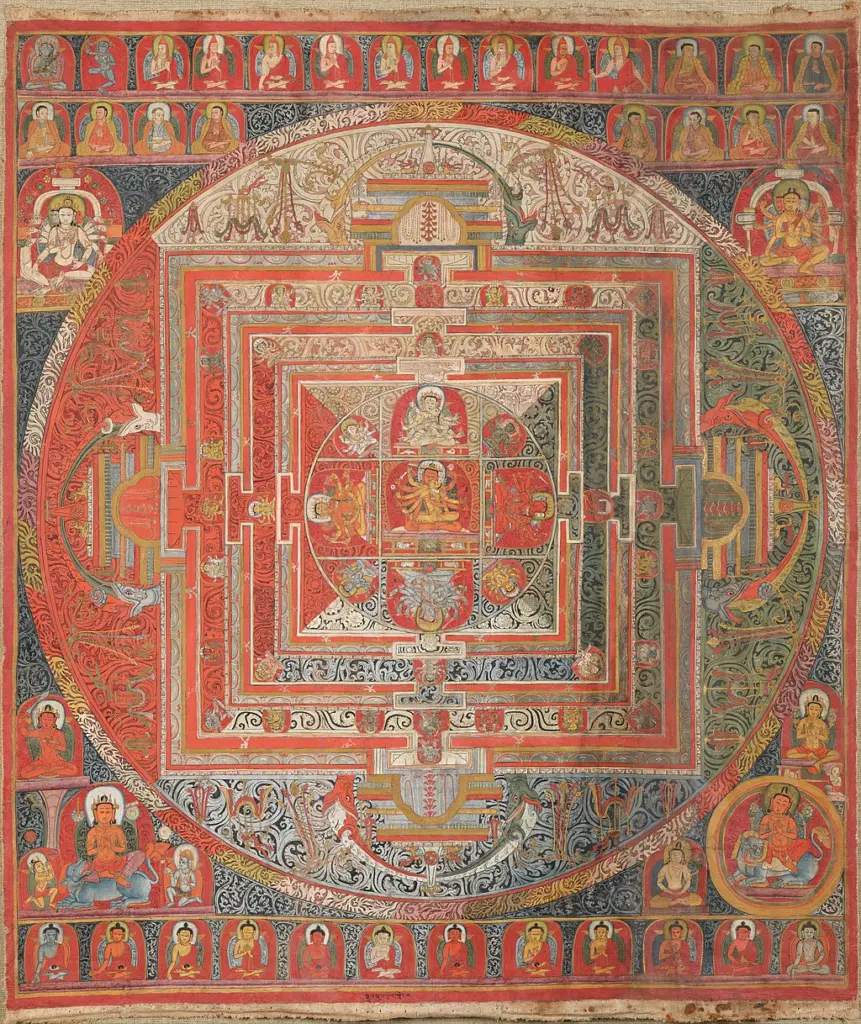
What is a Mandala?
A mandala, which translates to “circle” in ancient Sanskrit, is a geometric configuration of symbols. The mandala represents wholeness, unity, and harmony.
Originating from Indian religions like Hinduism and Buddhism, the concept and use of mandalas have since spread globally, transcending cultural and religious boundaries.
The primary structure of a mandala consists of a center point emanating outward with symmetrical designs, often enclosed within a circular shape. This reflects the universe’s fundamental structure as perceived by ancient sages and is a physical representation of the cosmos.
Mandalas serve various purposes, including:
-
Spiritual: Used in religious practices, mandalas can symbolize deities, cosmological truths, or stages of enlightenment.
-
Therapeutic: In modern psychology and therapy, creating or coloring mandalas can be a meditative process, offering therapeutic benefits such as reducing stress, enhancing focus, and promoting a sense of balance.
-
Artistic: Mandalas are also celebrated purely for their aesthetic appeal.
10 Types of Mandalas

1. Teaching Mandalas
Teaching Mandalas, particularly rooted in Tibetan Buddhism, are visual aids crafted to convey the intricate teachings of the Buddha and assist in spiritual disciplines.
The primary purpose of a teaching mandala is to visually depict and simplify multifaceted spiritual ideas. Thus, they often serve as focal points during meditation.
One of the most well-known teaching mandalas is the Kalachakra mandala. This intricate design helps elucidate the Kalachakra tantra, a teaching that revolves around the concepts of time and cycles.

2. Sand Mandalas
Sand Mandalas, also prominent in Tibetan Buddhism, are meticulously created grain by grain, using colored sand, and the process itself is as meditative and symbolic as the final design.
The act of constructing a sand mandala involves monks laying out the design and then filling it in with vibrantly colored sands. This is typically done during a ceremony, often lasting several days, where monks will consecrate the space and then laboriously work to create the intricate patterns and symbols.
However, despite the tremendous effort and time put into their creation, sand mandalas are not meant to last.
After the mandala is completed and its purpose served, monks will perform a ceremonial destruction of the mandala. This often involves sweeping the sand together or pouring water over it.
The dismantling of the sand mandala embodies the Buddhist teaching of impermanence. Everything in life, no matter how beautiful, is transient and will eventually come to an end. By creating something so intricate only to willingly destroy it, monks demonstrate detachment from the material world and emphasize the importance of valuing the process and the present moment over the final product.
The collected sand, now infused with blessings, is typically offered back to nature, often being poured into a flowing body of water. This act symbolizes the dispersion of the blessings, allowing them to flow out into the world and benefit all beings.

3. Healing Mandalas
In Tibetan Buddhism, healing mandalas are believed to be reservoirs of powerful energies that can be channeled to bring about healing for both individuals and their surroundings.
Certain deities within the mandala might represent different healing energies such as White Tara or the Medicine Buddha. By meditating upon these deities and the mandala as a whole, practitioners can draw upon these energies for healing.
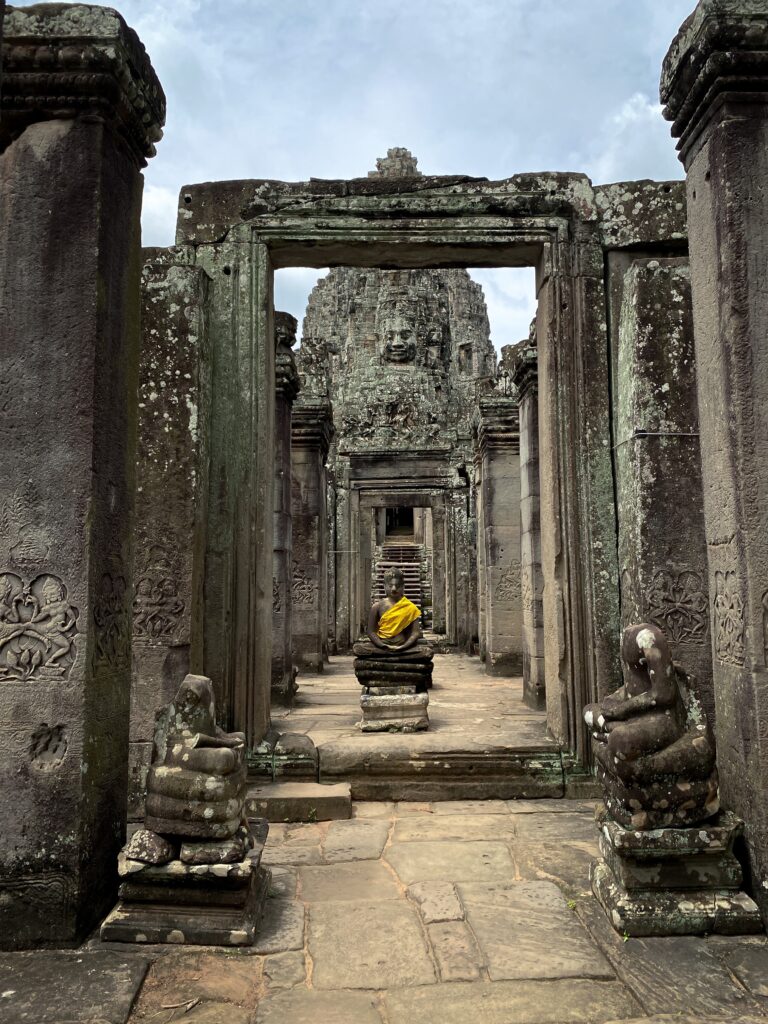
4. Architectural Mandalas
The manifestation of mandalas into physical spaces, often seen in the form of temples, stupas, and other spiritual edifices, is what gives birth to architectural mandalas.
These architectural marvels symbolize the universe, divinity, and the human journey toward enlightenment.
Two standout examples from the world of architectural mandalas are the majestic Angkor Wat and the mysterious Bayon Temple in Siem Reap, Cambodia.
Angkor Wat is an epitome of architectural mandalas. Constructed in the early 12th century, it was initially a Hindu temple dedicated to Vishnu, later transforming into a Theravada Buddhist temple. Its design is a representation of the Mount Meru, the home of the gods in Hindu cosmology. The temple complex is surrounded by a vast moat, representing the cosmic ocean. As one enters and moves towards the central sanctuary, they undertake a symbolic ascent to the divine realm.
Located at the heart of the ancient city of Angkor Thom, the Bayon Temple is renowned for its massive stone faces believed to be of Bodhisattva Avalokiteshvara, each emanating a serene and enigmatic smile. Bayon is primarily a Mahayana Buddhist temple but also incorporates elements from Hindu cosmology. Its central mass is a representation of the intersection of heaven and earth. The architectural layout is a maze-like mandala, with concentric galleries leading to the central sanctuary.

5. Personal Mandalas
At the intersection of introspection and creativity, personal mandalas emerge as potent tools for self-exploration and expression.
Distinct from the traditional mandalas, these are deeply individualistic, reflecting the creator’s inner world, emotions, experiences, and aspirations.
The significance of personal mandalas was perhaps most notably championed in the West by the Swiss psychiatrist Carl Jung (who so happens to be credited for bringing mandalas to Western Culture!)
For Jung, the mandala was more than just a spiritual symbol; it was a psychological one. He encountered the mandala in his work with patients and in his personal explorations of the unconscious. Intriguingly, he began drawing mandalas as a way to explore and integrate his own inner experiences long before he fully recognized their Eastern spiritual origins.
Jung believed that the natural urge to draw circles and create mandalas stemmed from the psyche’s desire for wholeness and integration. For him, these personal mandalas were “snapshots” of the inner self at a particular moment in time, revealing the current state of one’s psychic equilibrium (or lack thereof).
Creating a personal mandala offers a visual pathway to dive into the unconscious, bringing forth latent emotions, conflicts, and desires. Moreover, the act itself is quite therapeutic.
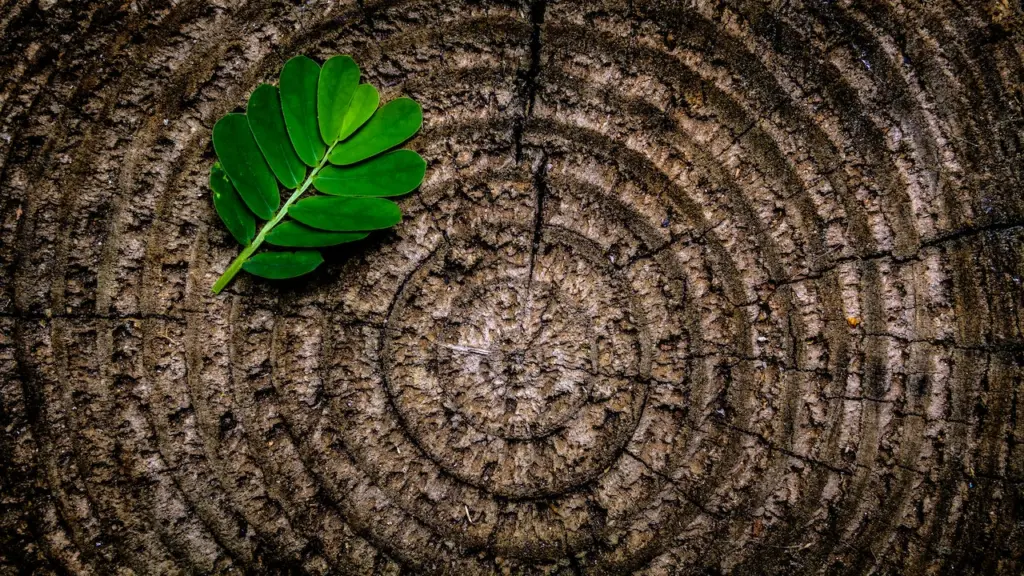
6. Nature Mandalas
Nature, with its intrinsic patterns, is a wellspring of mandala imagery.
Nature mandalas are inspired by and often created directly from the environment, showcasing the innate symmetry and harmony found in the natural world. These mandalas serve as a bridge between the human spirit and the vast expanse of nature, allowing one to tap into the primal energies and profound beauty of the universe.
The very essence of nature showcases mandalic patterns everywhere: the concentric rings of a tree trunk, the intricate designs of a spider’s web, the radiant petals of a blooming flower, and the cyclical phases of the moon.
Creating nature mandalas often involves the use of natural materials like leaves, stones, flowers, twigs, and seashells.
Andy Goldsworthy, a British sculptor and environmentalist, is known for his ephemeral artworks, which can be seen as nature mandalas.

7. Yantra Mandalas
Deeply embedded within the spiritual traditions of India, particularly within Tantric Hinduism and certain schools of Buddhism, the Yantra mandala stands out as another geometric symbol of cosmology.
“Yantra” in Sanskrit can be understood as “instrument.”
A Yantra is typically composed of a series of geometric shapes. Each of these shapes is symbolic:
- Bindu: The central point, representing the source.
- Triangles: Depending on their orientation, triangles can symbolize male (Shiva, yang, upward-pointing) and female (Shakti, yin, downward-pointing) energies.
- Circles: Signifying the cyclical nature of life
- Lotus Patterns: Symbolizing spiritual unfolding
Among the most renowned Yantras is the Sri Yantra, often referred to as the “queen of Yantras.” Meditating on the Sri Yantra is believed to lead one to the essence of existence and unity with the divine.
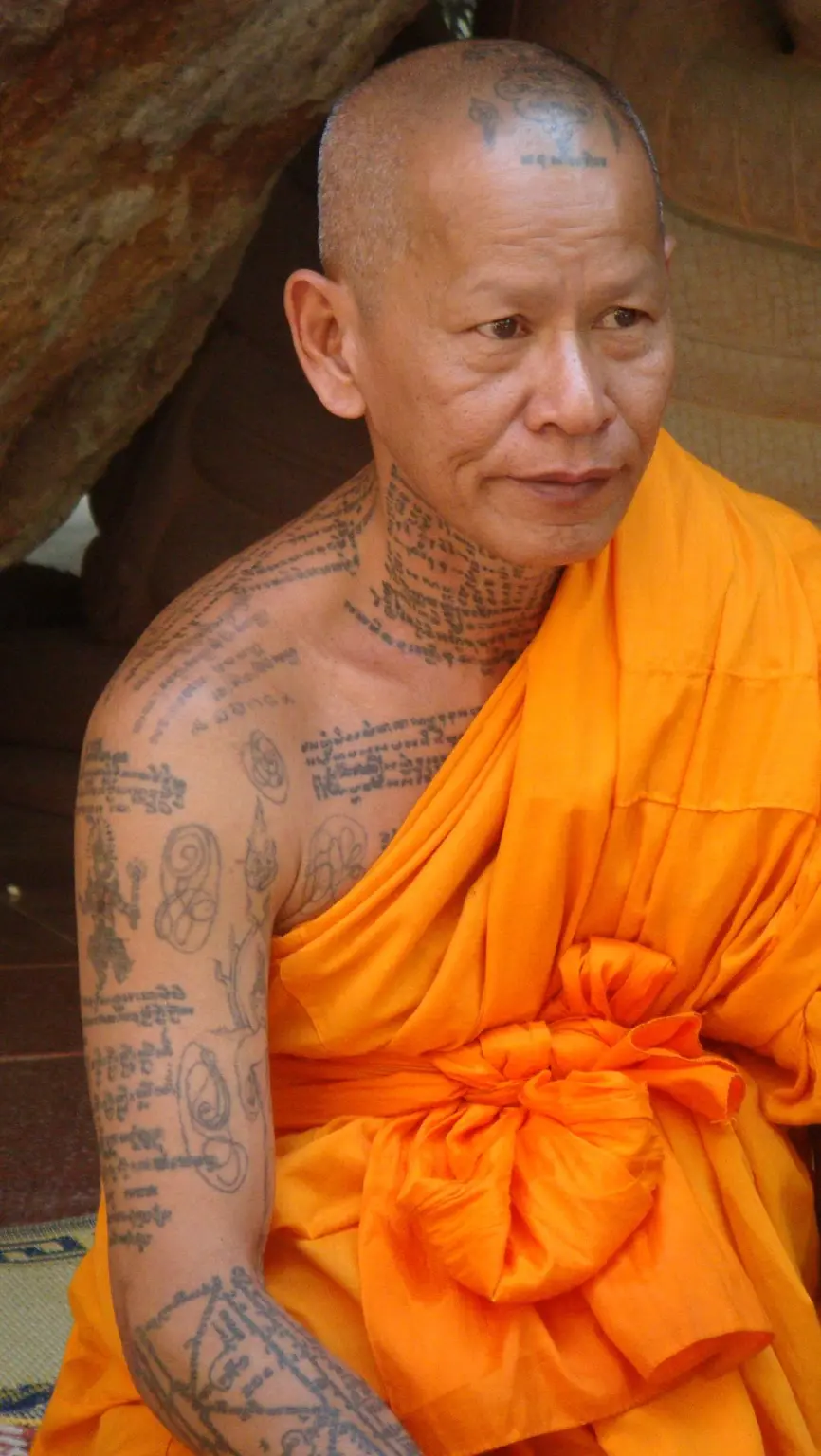
8. Tattoo Mandalas
The transformative power of mandalas have also found a profound space on human skin in the form of tattoos.
Originating in Southeast Asia, particularly Thailand and Cambodia, the holy Sak Yant tattoos stand out as an iconic form of mandala body art. These tattoos, blending geometric designs with ancient script, are traditionally inked using a bamboo rod by monks.
With each Sak Yant, not only is the design important, but so is the process, as the tattoos are accompanied by blessings. These tattoos provide protection, strength, and even specific powers.
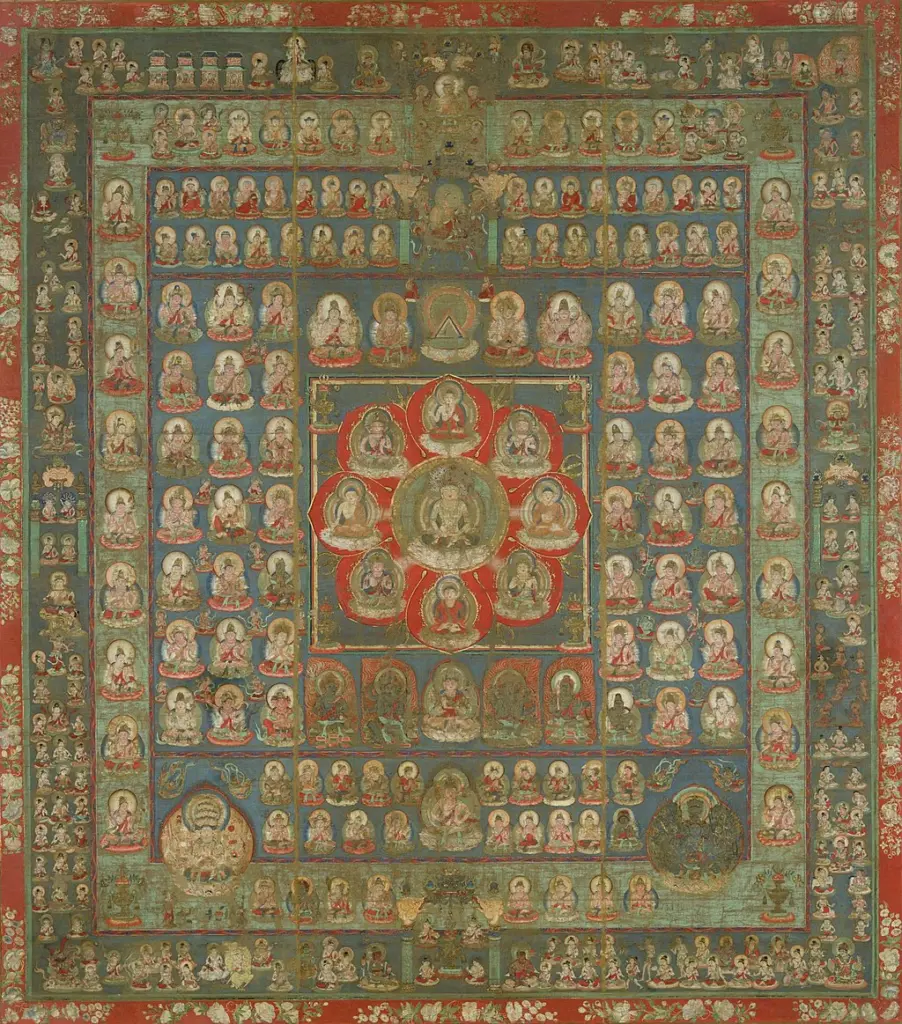
9. Cosmic Mandalas
The universe itself is a vast, intricate web of interconnectedness and cycles, a grand display of order and chaos dancing in tandem. It is no surprise, then, that humans, in their quest to understand the cosmos, have conceived of it in the form of mandalas, symbolizing the broader cosmic order and our place within it.
The Zodiac, a celestial circle containing twelve constellations through which the sun appears to move annually, represents this cyclical journey. Each zodiac sign, symbolizes a particular slice of time with its distinct characteristics. Zodiac mandalas (whether Western or Chinese Zodiacs) capture this duality of astronomical reality and the mythological narratives tied to each sign, offering insights into human nature and the universal energies at play.
On the more spiritual end of the cosmic spectrum, the Cosmic Buddha Mandala (like almost all mandalas) also illuminates the idea of unity and interconnectedness. The Cosmic Buddha is perceived as the embodiment of the universe. This perspective sees every aspect of the cosmos, from the grandest galaxies to the tiniest particles, as emanations of a single cosmic consciousness.
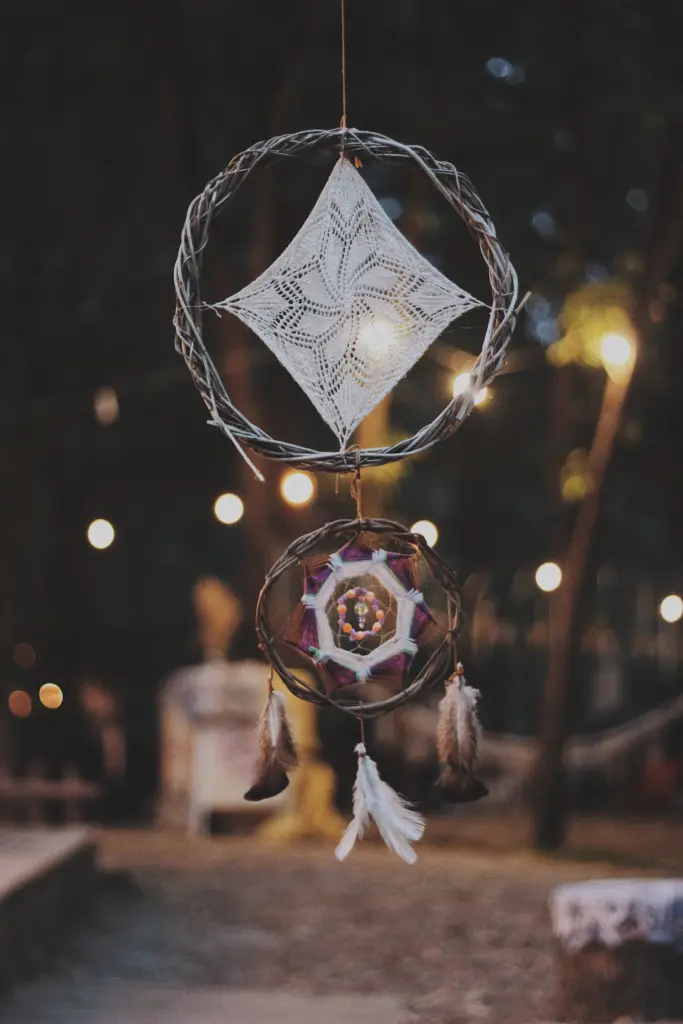
10. Dreamcatcher Mandalas
Dreamcatchers, while not traditionally termed as mandalas, resonate deeply with the foundational principles of mandalas, particularly in terms of their symbolic representation and purpose of protection.
Originating from Native American cultures, primarily the Ojibwe people, dreamcatchers were crafted as protective charms, designed to filter out negative dreams and energies, allowing only the positive ones to pass through.
At the center of a dreamcatcher lies a circular shape, typically woven in a web-like pattern. This circle mirrors the central structure of many mandalas. The hoop represents the circle of life and the web inside, much like the intricate designs within a mandala, stands for the interconnectedness of all things.
Just as mandalas often represent cosmic order, balance, and wholeness, dreamcatchers, too, serve to bring order—by sieving out harmful energies—and restoring balance to the dreamer’s consciousness.
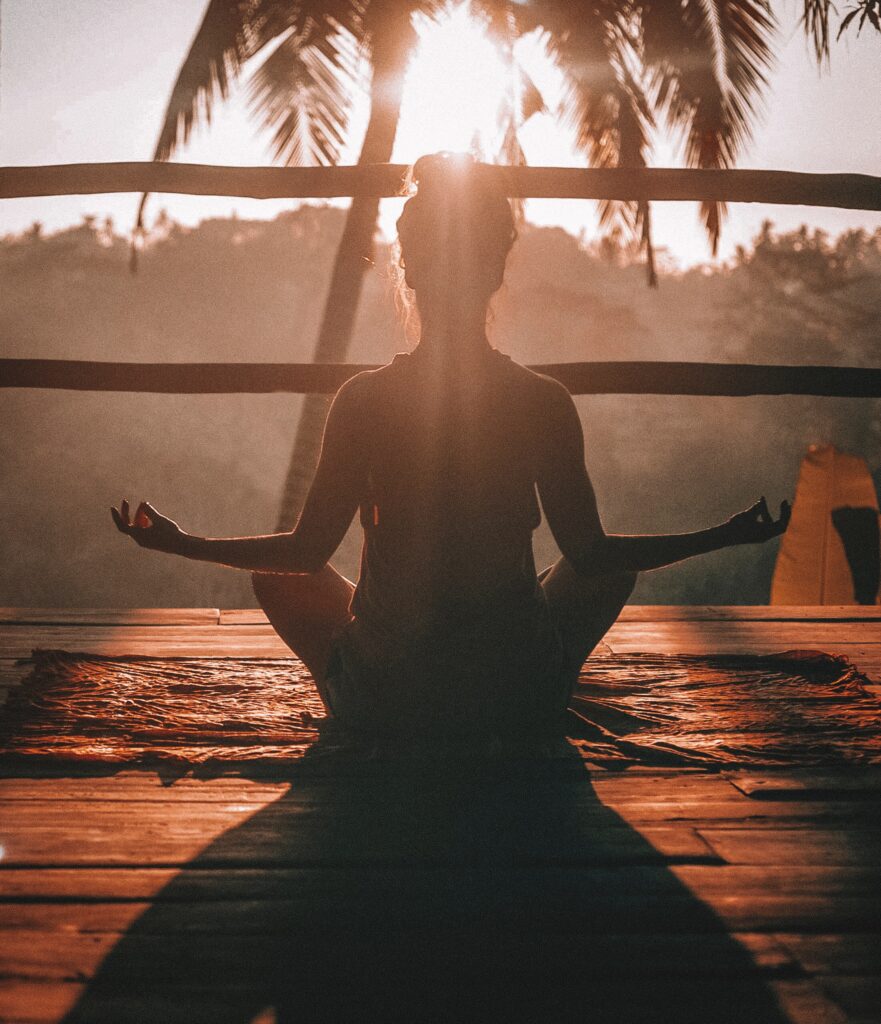
How to Use Mandalas
Mandalas offer a wide array of uses, ranging from spiritual practices to therapeutic techniques to daily mindfulness exercises. Harnessing the power of mandalas can provide clarity, healing, and a deeper understanding of oneself and the universe. Here’s how to incorporate them into various aspects of your life:
-
Meditation: One of the most traditional uses of mandalas, especially in Eastern spiritual practices, is as a focus point for meditation. By gazing at a mandala, you can center your mind, reduce wandering thoughts, and enter a state of deep contemplation. The patterns draw your attention inward, facilitating a journey into your own consciousness.
-
Art Therapy: Creating your own mandala can be a therapeutic exercise. Drawing, coloring, or even digitally designing mandalas allows you to express emotions, channel stress, and tap into your subconscious. Art therapists often use mandalas to help people explore their feelings and find emotional balance.
-
Spiritual Exploration: Different cultures use mandalas as tools for spiritual rituals. You can incorporate them into your own spiritual practices, whether it’s through prayer, chant, or any other ritual, using the mandala as a representation of the divine or the universe.
-
Decoration: Hanging mandala art in your home can transform the energy of the space. They not only beautify the environment but also bring really good feng shui or vastu energies.
-
Yoga: Some yoga practitioners use mandalas as a focus point during their practice, helping them align their physical movements with their mental state.
-
Stress Reduction: Simply coloring a mandala can be a form of mindfulness exercise. It allows you to stay in the present moment, reduce anxiety, and achieve a state of calm.

Benefits of Using Mandalas
The use of mandalas not only captivate the eye but also bring a multitude of benefits to those who engage with them.
Enhanced Concentration: Mandalas, with their symmetrical patterns, can act as a focal point, aiding in concentration and reducing distractions, especially during meditation.
Emotional Healing: Creating or coloring mandalas offer a non-verbal medium to express emotions, helping to process complex feelings.
Stress Reduction: Engaging with mandalas, whether through coloring, drawing, or simply gazing, provides a meditative state that can reduce anxiety and induce calm.
Self-Discovery: Mandalas encourage introspection. As you interact with them, you may uncover insights about your desires, fears, and aspects of your personality.
Spiritual Growth: Many regard mandalas as sacred. They can be used in spiritual practices to deepen your connection to the divine and the universe.
Boosted Creativity: Designing your own mandala can spur creativity. It encourages you to play with shapes, colors, and patterns, stimulating the imaginative parts of the brain.
Cultural Appreciation: Exploring mandalas from various cultures can deepen your appreciation for global art, spirituality, and traditions.
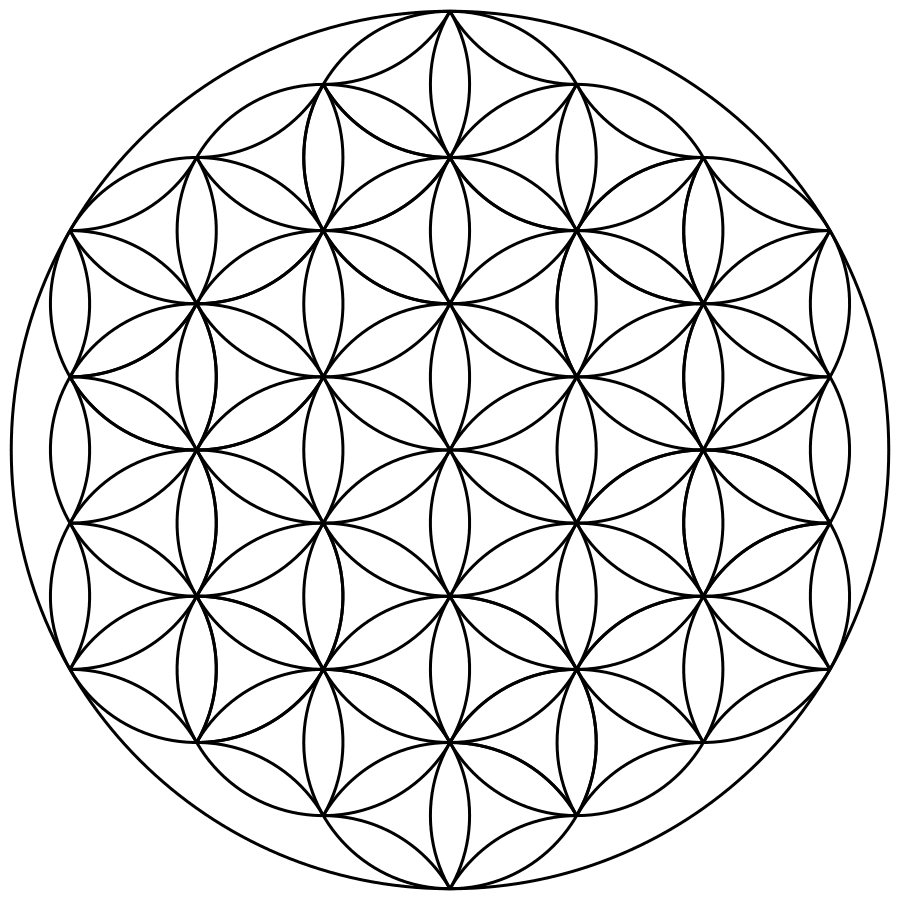
Are Mandalas Sacred Geometry?
Sacred geometry refers to the universal patterns that appear throughout nature – from the fractals in leaves to the symmetry in snowflakes. These designs are revered due to their omnipresence and role as foundational design principles of the cosmos. Two renowned patterns within sacred geometry are the Seed of Life and the Flower of Life which I’m sure you must have encountered at least once in your life.
The Seed of Life is a motif formed by seven overlapping circles, representing a foundational blueprint of creation and, in some traditions, the seven days of creation. This core pattern gives rise to the larger, intricate design known as the Flower of Life.
Mandalas mirror these principles of sacred geometry. In fact, elements of sacred geometry, such as the Seed of Life or Flower of Life, often find their way into the designs of mandalas, intertwining these two concepts further.
While not every mandala directly incorporates symbols of sacred geometry, the foundational principles echoing in both are profoundly similar.

How to Choose the Right Mandala for You?
Choosing the right mandala for you can be a deeply personal journey. Here’s a guide to help you navigate this selection process:
Introspect on Your Intentions: Before delving into various designs, reflect on why you’re seeking a mandala. Are you looking for a meditative tool, a symbol of protection, a representation of gratitude, or perhaps a design for artistic purposes? Understanding your intention can narrow down choices and lead you to a mandala that aligns with your purpose.
Go with Your Gut Feeling: Sometimes, the first instinct is the best. If a certain design or pattern catches your eye or evokes a particular emotion, it might be the one for you. Mandalas often communicate with our subconscious, so trust your feelings.
Research Symbolism: Mandalas come with a plethora of symbols, each carrying its own meaning. By understanding the symbolism embedded within different designs, you can choose a mandala that embodies the values you want to bring into your life.
Choose by Color: Colors have psychological effects. For instance, blue can be calming, red might evoke passion, and green often relates to nature and healing.
Cultural Resonance: Mandalas span across various cultures, from Hindu and Buddhist traditions to Native American and Celtic designs. If you feel connected to a particular culture, its mandalas might resonate more with you.
Personal Creation: If you don’t find a pre-existing mandala that feels right, consider creating your own. Personalized mandalas can be especially powerful as they are direct reflections of your emotions, thoughts, and desires.
Meditate on Your Choice: Before finalizing your selection, spend some quiet moments meditating on or with the mandala you’re considering. If it enhances your focus, brings clarity, or evokes positive emotions, it’s likely a good match.


